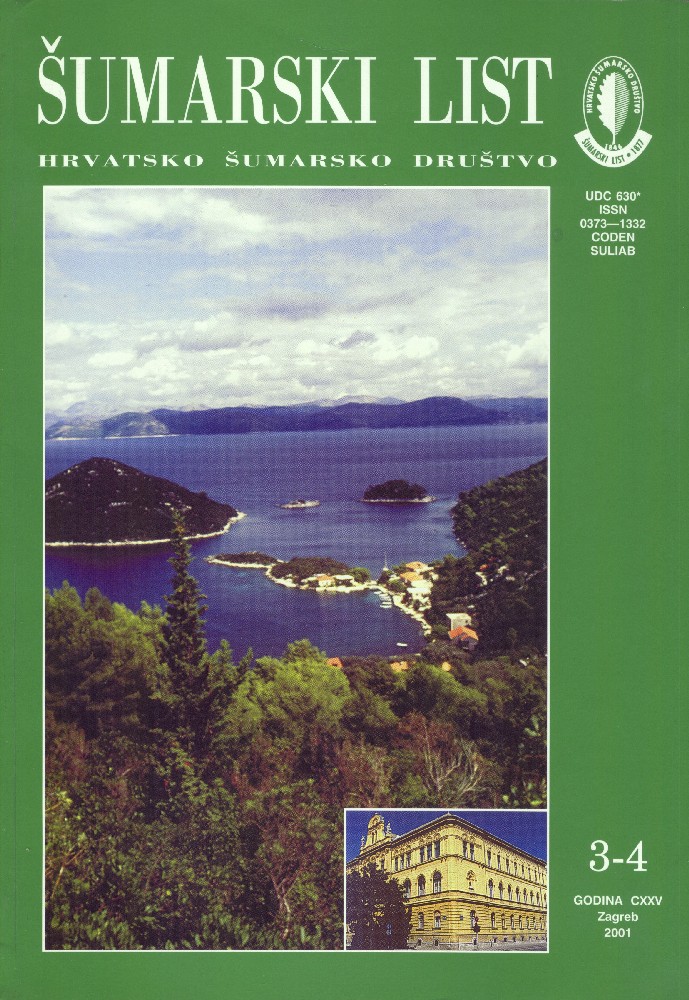
broj: 3-4/2001
pdf (26,7 MB) |
|
||||||||||||||
| IZVORNI ZNANSTVENI ČLANCI | ||
| Vlahinja, J. | UDK 630* 383+ 663(001) | |
| Determining the Criteria for Distribution of Cost and Profit of Shared Forest Roads pdf HR EN | 131 | |
| PREGLEDNI ČLANCI | ||
| Molak, B. | UDK 504.05 | |
| Emergency Management in Croatia Must be Primarv Safety and Economic Interesi of Government pdf HR EN | 153 | |
| Karlović, M. | UDK 630* 156 | |
| The First Croatian Hunting Exhibition Abroad (Budapest, 1896) pdf HR EN | 169 | |
| STRUČNI ČLANCI | ||
| Nodilo, M. | UDK 630* 907 | |
| Nature Protection in Service of Visitors who Visit NP "Mljet" pdf HR EN | 177 | |
| Vukelić, M. | UDK 630* 232.42 | |
| A Review of Intensive Conifer Cultures in Lika pdf HR EN | 185 | |
| Summary: The history of establishing classical conifer cultures in Lika knows of only one short period from 1960 to 1968, in which plantations and intensive fast-growing conifer cultures were established. They are characterised by the fact that they were raised using the new technology with the application of agro-technology, nutrition and reinforced nutrition, as well as the choice of local and foreign conifer species.The purpose of such production was not only to improve the structure of Lika forests in favour of conifers, but also to rapidly produce conifer pulp wood that was lacking on the market. These were the reasons for which long-term production of plantations and intensive conifer cultures was drawn up for Lika as a potential region. In 1964, the forest enterprise of that time, “Lika” from Gospić, engaged the former “Conifer Institute” from Jastrebarsko to draw up a feasibility study for plantations and intensive conifer cultures for the regions of Medak and Žitnik over an area of 2,000 ha. On the basis of the study, the “Plantation and intensive cultures department” established 1,217.14 ha of plantations and intensive conifer cultures in the period 1964 - 1968. Due to a specific technology, the cultures were named the “Pilot Project”, at which further research has been carried out for scientific and practical purposes. The ŠIZČ from Jastrebarsko established experimental plots on the Medak facility for the purpose of studying the influence of mineral fertilisers on the growth and increment of the cultures. The established plantations within the “Pilot Project” have significant importance not only from an economic standpoint, but also that of generally useful benefits. Key words: culture; growth and increment; intensive; Pilot Project; plantation | ||
| Kružić, T. | UDK 630* 731 +228 | |
| Guide for Responsible Use of the FSC LOGO pdf HR EN | 197 | |


